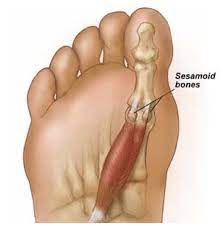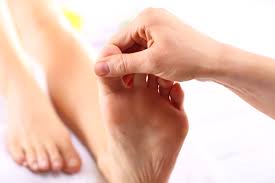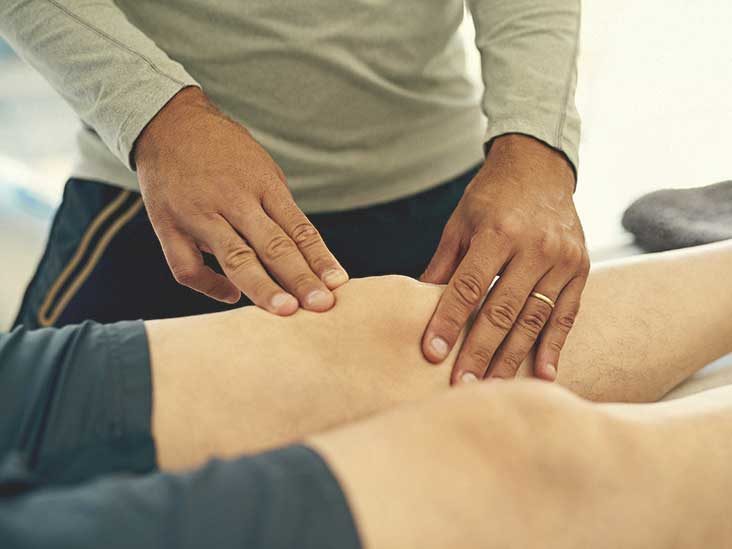Sesamoiditis is a condition that affects the sesamoid bones. These are two small bones that are located near the big toe. Sesamoiditis can cause pain and inflammation in the area. Massage therapy is often recommended as a treatment for this condition. In this blog post, we will discuss what sesamoiditis is and how massage can help to relieve the symptoms.
Contents
What Is Sesamoiditis?

Sesamoiditis is a condition that results when the sesamoid bones in the feet become irritated or inflamed. These bones are located under the big toe joint and help to stabilize it during movement. Sesamoiditis can be caused by repetitive stress on the feet, such as from running or dancing, or from direct trauma to the area. Symptoms of sesamoiditis include pain and tenderness in the big toe joint, difficulty moving the joint, and swelling.
Is Massage Good For Sesamoiditis?
Yes, massage can help with sesamoiditis by decreasing inflammation and pain. It can also help improve the range of motion.
Sesamoid bones should not be massaged directly, but doing so around can improve blood circulation and therefore healing time.
There’s no denying that massage feels good. But can it also help to relieve pain and other symptoms associated with sesamoiditis? Let’s take a closer look at this condition and how massage might be able to help.
How Can Massage Help In Sesamoiditis?

Massage can help in Sesamoiditis in number of ways. They are as follows:
Reduce inflammation and pain
The main aim of massage in Sesamoiditis is to reduce inflammation and pain. Massage helps to increase blood circulation which in turn helps to reduce inflammation. It also helps to release muscle tension and relax the muscles.
Improve range of motion
Another benefit of massage in Sesamoiditis is that it can help to improve the range of motion. Massage helps to stretch the muscles and tendons around the sesamoids. This helps to increase flexibility and reduce stiffness.
Help to break down scar tissue
Scar tissue can form around the sesamoids due to inflammation. This scar tissue can further lead to the restricted movement of the sesamoids. Massage helps to break down this scar tissue and thus helps in the movement of the sesamoids.
Improve circulation
One of the main benefits of massage is that it helps to improve circulation. When the circulation is improved, more oxygen and nutrients are carried to the cells and tissues. This helps to speed up the healing process.
Overall, massage can help in Sesamoiditis by reducing inflammation, pain, and stiffness and improving the range of motion and circulation. If you are suffering from Sesamoiditis, then you should try massage therapy.
What Are The Types Of Massage Used in Sesamoiditis?
There are various types of massage used in Sesamoiditis:
Swedish Massage
This is the most common type of massage. It uses long, smooth strokes to promote relaxation and increase circulation. For instance, if you have sesamoiditis in your right foot, the therapist will massage your left foot first to help relax your entire body. Then, he or she will work on your right foot.
Deep Tissue Massage
This type of massage targets the deeper layers of muscle tissue. It is often used to relieve pain and tension in the muscles. For instance, if you have sesamoiditis, deep tissue massage can help to break down the scar tissue that has formed around the sesamoids. This will help to reduce pain and inflammation in the area.
Trigger Point Massage
This type of massage focuses on specific areas of muscle tissue that are tense. It is often used to relieve pain in the muscles. For example, a person with sesamoiditis may have trigger points in the muscles around the knee. Massage can help to release these trigger points and relieve pain.
Sports Massage
This type of massage is designed for athletes. It can help increase flexibility and performance, and reduce recovery time from injuries. For instance, a golfer may receive a massage before playing to help warm up the muscles and prevent injury. After an injury, a massage can help speed up the healing process by reducing inflammation and promoting blood flow to the affected area.
Reflexology
This type of massage focuses on specific pressure points in the hands and feet that are thought to correspond with different areas of the body. For example, the point between the big toe and the second toe is thought to be connected to the sinuses. Stimulating this point is said to help clear sinus congestion.
There’s no scientific evidence to support these claims, but many people find reflexology helpful for relieving tension headaches, migraines, sinus problems, and TMJ (temporomandibular joint) pain.
Aromatherapy massage
This type of massage uses essential oils extracted from plants. The therapist generally starts by applying the oil to your back and neck. Aromatherapy can be very soothing and is thought to help relieve stress, anxiety, and depression.
Shiatsu
This type of massage uses pressure and finger strokes on the acupuncture points of the body. It is believed to help promote relaxation and balance in the body. For example, a recent study found that people with chronic low back pain who received eight weeks of Shiatsu massage therapy had significant improvements in pain and disability compared to those who did not receive massage therapy.
Thai Massage
This type of massage uses gentle pressure and stretching to relieve tension and improve flexibility. For instance, sesamoiditis is often caused by repetitive motions, such as running or dancing. Thai massage can help to Stretch the muscles and tendons around the sesamoids. This can help reduce pain and improve the range of motion.
Hot Stone Massage
This type of massage uses heated stones that are placed on the body. It is believed to help promote relaxation and increase circulation. For example, a 2009 study found that hot stone massage was effective in reducing pain and improving function in people with chronic low back pain.
Massage can be an effective treatment for Sesamoiditis. It can help to relieve pain, increase circulation, and improve flexibility. If you are considering massage for Sesamoiditis, be sure to consult with your doctor first to make sure it is safe for you.
How Does Massage Perform?
- Massage can work to break up and disperse the accumulation of scar tissue around the sesamoids.
- This will help to restore the normal range of motion and reduce pain. In addition, massage can help to increase blood flow to the area which can aid in healing.
- Massage should be performed by a qualified therapist who is familiar with treating this condition.
- The frequency of massage will depend on the severity of your condition.
- If you are in the acute phase of sesamoiditis, you may need to receive a massage several times per week. As your condition improves, the frequency of massage can be reduced.
Sesamoiditis is a painful condition that can limit your ability to move your foot. Massage can be an effective treatment to help break up the accumulation of scar tissue and increase blood flow to the area to aid in healing.
Conclusion
It may be concluded that sesamoiditis massage can be beneficial in treating the condition and reducing pain. The massage should be performed by a qualified therapist, who will take care to avoid aggravating the condition. In addition, the therapist will work with the individual to design a treatment plan that is tailored to their specific needs. Massage can be an effective treatment for sesamoiditis, and may help to improve the quality of life for those who suffer from this condition.
Physical Therapy help patients recover from pain. If you’re experiencing Back pain, Shoulder pain, Knee pain, Neck pain, Elbow pain, Hip pain, or Arthritis pain, a physical therapist at MantraCare can help: Book a physiotherapy session.


